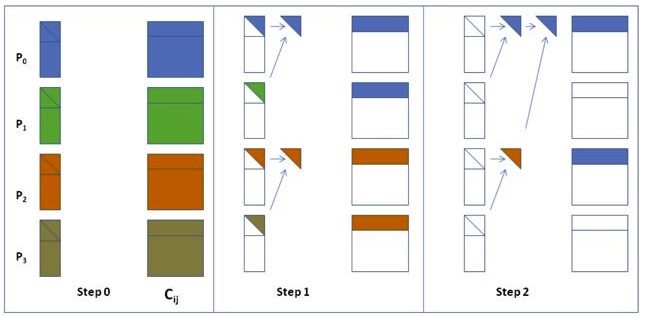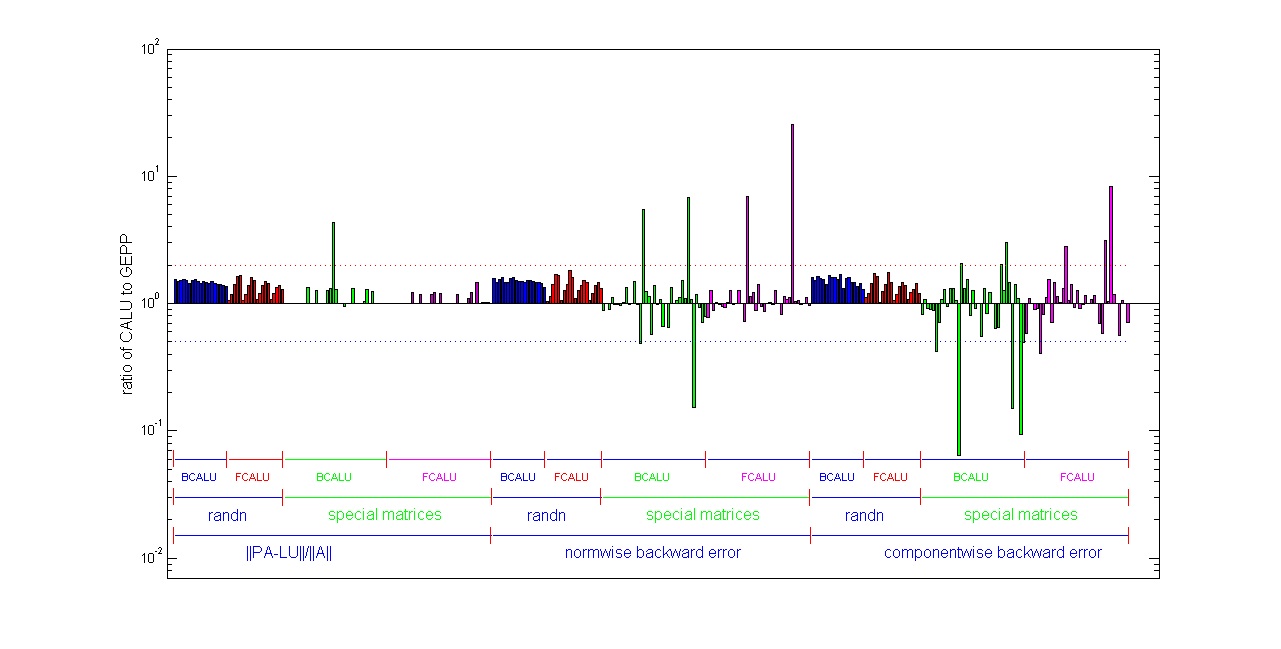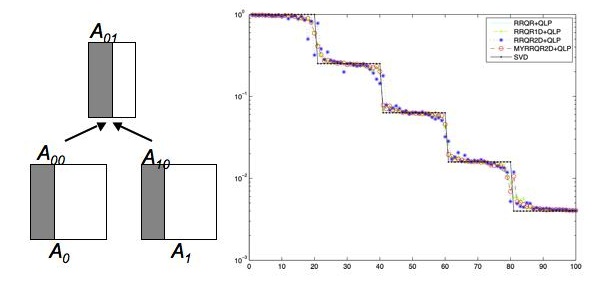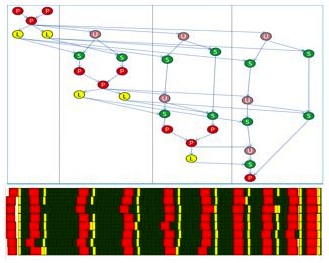COALA
Communication Optimal Algoritms for Linear Algebra

Menu:
Communication avoiding algorithms
Our research focuses on a novel approach to dense and sparse linear
algebra algorithms, which aims at minimizing the communication, where
communication refers to both its volume and the number of messages
exchanged. The main goal is to reformulate and redesign linear
algebra algorithms so that they are optimal in an amount of the
communication they perform, while retaining the numerical stability.
In general, they reduce significantly the amount of time spent
communicating, relative to conventional algorithms. The work here
involves both theoretical investigation and practical coding on
diverse computational platforms. The new algorithms are referred to
as communication avoiding algorithms.
 Very often, they are based on a reformulation which expresses the
operation on a block of columns of the input matrix as a reduce
operation. The reduction tree influences the task dependency graph
associated with the respective computation. Its choice depends on the
underlying architecture.
Very often, they are based on a reformulation which expresses the
operation on a block of columns of the input matrix as a reduce
operation. The reduction tree influences the task dependency graph
associated with the respective computation. Its choice depends on the
underlying architecture.
Lower bounds on communication
Recent results have identified lower bounds on communication for direct operations (non Strassen like) in numerical linear algebra as LU and QR factorizations, eigenvalue and singular value computations. Most of the algorithms in the dense case that attain these bounds are new communication avoiding algorithms. In the sparse case, results to date have identified attainable lower bounds on communication for the Cholesky factorization of matrices arising from discretization on two dimensional and three dimensional regular grids. There are many open questions that are left in the sparse case. In particular, the simple operation of sparse matrix-matrix multiplication turns out to be more difficult to analyze than the Cholesky factorization.
Top of the pageNumerical Stability

 Our goal is to design algorithms that are as stable as
classic algorithms.
Our goal is to design algorithms that are as stable as
classic algorithms.
Communication avoiding LU (CALU) uses a new pivoting
strategy, refered to as tournament pivoting. Our study
of numerical stability includes proofs showing
similarities between CALU and Gaussian elimination. In
addition, extensive experimental results on random
matrices and a set of special matrices show that in
practice CALU is as stable as Gaussian elimination (see
publication on CALU and figure on the left).
A similar tournamen pivoting technique is used in a
communication avoiding rank revealing QR
factorization. The results on the left show for the
devil's matrix (a matrix with multiple gaps in the
singular values) the values on the diagonal of L
obtained after a QLP factorization.
Validation and Software
 The algorithms are implemented on hierarchical parallel machines based
on SMPs of multicore processors. As in other related projects, as for
example PLASMA, our approach consists in scheduling using dynamic or
static techniques the task dependency graph of the
associated communication avoiding algorithm.
An important aspect that we consider in this collaboration is the
validation of the algorithms in real applications, through our
collaborations.
The algorithms are implemented on hierarchical parallel machines based
on SMPs of multicore processors. As in other related projects, as for
example PLASMA, our approach consists in scheduling using dynamic or
static techniques the task dependency graph of the
associated communication avoiding algorithm.
An important aspect that we consider in this collaboration is the
validation of the algorithms in real applications, through our
collaborations.